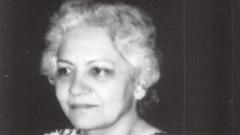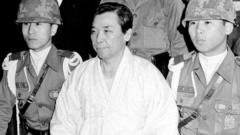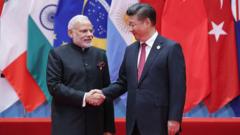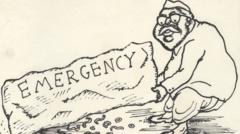At 90, Dr. Sneh Bhargava, a trailblazer in Indian medicine, shares her extraordinary career in radiology and recollections during her tenure as AIIMS director, including pivotal events surrounding Indira Gandhi's tragic assassination.**
A Radiologist's Remarkable Journey: Sneh Bhargava's Legacy at AIIMS**

A Radiologist's Remarkable Journey: Sneh Bhargava's Legacy at AIIMS**
Dr. Sneh Bhargava, the first female director of AIIMS, reflects on her pioneering career and the harrowing moment of Indira Gandhi's assassination as detailed in her memoir.**
Dr. Sneh Bhargava has always defied conventions and expectations. In 1984, she made history by becoming the first woman director of the All India Institute of Medical Sciences (AIIMS) in New Delhi, a post she still holds unique distinction for. Now, at the age of 95, her contributions as a radiologist remain influential, and she recently shared her life story in her memoir, "The Woman Who Ran AIIMS."
Dr. Bhargava's incredible journey began in the 1940s, an era of budding radiology in India when she chose this path. By the time she was appointed director on the fateful day of October 31, 1984, she was ready for anything but the shocking events that were about to unfold. While busy in her office that morning, she received a panicked call, prompting her to rush to the casualty ward, where Indira Gandhi lay bleeding.
"In that moment, my priority was to help her," Dr. Bhargava recalled in an interview. Gandhi had been shot by her bodyguards, prompting fears of chaos outside the hospital. Dr. Bhargava worked tirelessly to stabilize the situation, all the while knowing that the prime minister had already succumbed to her injuries. Moments of intense pressure unfolded, particularly as the need to keep her death confidential loomed over the medical staff until Gandhi’s son could assume leadership.
The unfolding chaos of that day is just one of many riveting stories Dr. Bhargava recounts in her memoir. She meticulously details the embalming process of Gandhi’s body, a challenge complicated by the severity of her wounds. A reminder of the political tensions rippling through the country, the episode is emblematic of a career that intertwines medicine and historical events.
Her memoir also highlights lighter moments, such as the time Sonia Gandhi brought her son Rahul to AIIMS after a minor accident. Despite Rajiv Gandhi’s desire to personally drive him to the hospital, Dr. Bhargava stood firm on safety protocols, demonstrating her unwavering commitment to patient care during her illustrious tenure.
Throughout her career, Dr. Bhargava faced significant challenges, including external pressures from influential political figures. However, she consistently maintained focus on healthcare and the advancement of radiology as an integral part of medical diagnosis at AIIMS. Under her guidance, the department grew from basic imaging practices to one of the leading radiology units in India.
Born in 1930 to a well-off family in Lahore, her journey was punctuated by resilience, especially during the turmoil of partition. Inspired by a desire to help others, she frequently visited refugee camps as a child alongside her father. Later, she broke barriers by studying radiology in London, becoming the only woman in her class. After recognizing the dire need for skilled radiologists in India, she returned home, setting a precedence for women in medicine.
Dr. Bhargava emphasizes the importance of familial support for young women pursuing ambitious career goals: "It starts from childhood. Parents should support their daughters just as they would their sons." Her sentiments reflect a broader call for societal change, urging future generations of women to see their dreams as attainable.
As Dr. Bhargava continues to contribute to the medical community, her memoir serves as an inspiration, encapsulating not only her extraordinary career but also the legacy of resilience and determination she wishes to impart to future women leaders in India.




















